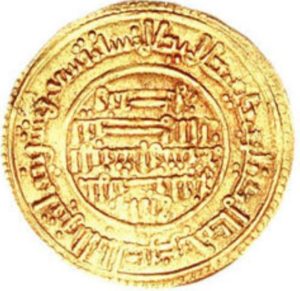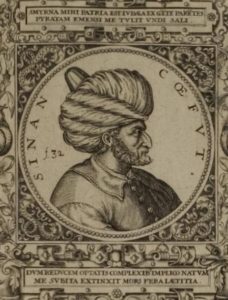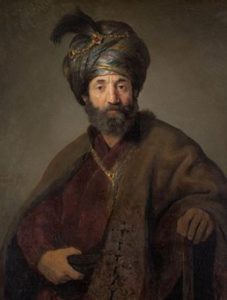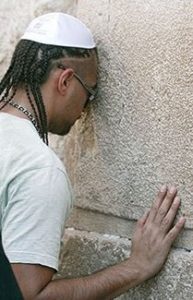The Crown Rabbi Who Built Spain

A Castilian maravedi gold coin issued in 1191
Abraham Seneor (1412-1493) was born in Segovia, Castile, into a wealthy Sephardic Jewish family who served as treasurers and accountants for Spanish monarchs. Seneor himself served the Castilian crown. In 1469, he was the key negotiator that arranged the marriage of Isabella of Castile to Ferdinand of Aragon, resulting in the eventual birth of the new Kingdom of Spain. Seneor became Isabella’s main advisor and confidante. In 1480, Isabella decreed that Seneor would receive a lifetime pension of a whopping 100,000 maravedi coins per year for his invaluable services. He was also appointed the Jewish chief justice and “crown rabbi”. In this role, he worked together with his close friend and fellow rabbi-treasurer, Don Isaac Abarbanel. Between the two of them, they were able to raise the sums needed for the Spanish to defeat the Moors in the War of Grenada. They were also the ones that got crown support and funding for Christopher Columbus’ first trip to America. Seneor often intervened on behalf of the Jews, and saved countless Jewish lives by ransoming those that had been captured by pirates. In 1492, the Spanish decreed the Edict of Expulsion to exile all Jews who did not convert to Christianity. Seneor was 80 years old, and knew he wouldn’t survive exile and expulsion. While the younger Abarbanel refused to stay in Spain (although he was given an exemption), the older Seneor decided to convert, at least publicly, in order to keep his influential role and try to ease the plight of the Jews as much as possible. He helped secure temporary refugee for the Jews in Portugal, then did whatever he could to make sure the Jewish exiles did not lose all of their wealth. Still, he was unable to survive the stress of the ordeal and passed away just months after the Expulsion. Seneor had taken on the new name Fernando Coronel, starting a new lineage of Spanish nobility. The Coronel children continued to play important roles in Spanish affairs for decades to come. Many of them were arrested by the Inquisition for continuing to practice Judaism in secret; some were executed and others deported. A great number ultimately returned to Judaism in Holland and the Americas.
Words of the Week
Israel was extraordinary in being the one socially revolutionary people in the Near East to produce a literature and to survive as a distinctive cultural and religious entity.
– Norman Gottwald, renowned professor of Biblical studies and political activist

 Sinan Reis (c. 1492-1546) was born to a Sephardic family that was expelled from Spain during the Expulsion of 1492 and settled in the Ottoman city of Smyrna. At the time, many Jews became pirates, attacking Spanish vessels both for revenge and to reclaim some of their confiscated wealth. Sinan joined the Barbary corsair pirates that sailed under the Ottoman flag. He became the right-hand man of the well-known pirate and Ottoman admiral Hayreddin Barbarossa. The two fought and won many battles against the Spanish and the Holy Roman Empire. The most famous was the Battle of Preveza in 1538. Barbarossa took Sinan’s military advice, leading to a magnificent Ottoman victory. Two years later, Sinan’s young son was captured at sea and forcibly baptized. The Christians refused to release him to the “infidels”, so Barbarossa led a fleet to bombard the Italian city of Piombino until Sinan’s son was finally freed. Barbarossa later dedicated his memoirs to Sinan, who was often referred to as Sinan Reis or Rayyis, Arabic for “chief”. Historical records from England describe him as “the famous Jewish pirate”, while the governor of Portuguese India at the time called him “the Great Jew”. Sinan went on to become Supreme Naval Commander of the Ottoman fleet.
Sinan Reis (c. 1492-1546) was born to a Sephardic family that was expelled from Spain during the Expulsion of 1492 and settled in the Ottoman city of Smyrna. At the time, many Jews became pirates, attacking Spanish vessels both for revenge and to reclaim some of their confiscated wealth. Sinan joined the Barbary corsair pirates that sailed under the Ottoman flag. He became the right-hand man of the well-known pirate and Ottoman admiral Hayreddin Barbarossa. The two fought and won many battles against the Spanish and the Holy Roman Empire. The most famous was the Battle of Preveza in 1538. Barbarossa took Sinan’s military advice, leading to a magnificent Ottoman victory. Two years later, Sinan’s young son was captured at sea and forcibly baptized. The Christians refused to release him to the “infidels”, so Barbarossa led a fleet to bombard the Italian city of Piombino until Sinan’s son was finally freed. Barbarossa later dedicated his memoirs to Sinan, who was often referred to as Sinan Reis or Rayyis, Arabic for “chief”. Historical records from England describe him as “the famous Jewish pirate”, while the governor of Portuguese India at the time called him “the Great Jew”. Sinan went on to become Supreme Naval Commander of the Ottoman fleet.
